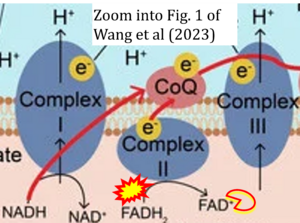Wang 2023 Biomolecules
| Wang R, Liang L, Matsumoto M, Iwata K, Umemura A, He F (2023) Reactive oxygen species and NRF2 signaling, friends or foes in cancer? Biomolecules 13:353. https://doi.org/10.3390/biom13020353 |
Wang R, Liang Lirong, Matsumoto M, Iwata K, Umemura A, He F (2023) Biomolecules
Abstract: The imbalance between reactive oxygen species (ROS) production and clearance causes oxidative stress and ROS, which play a central role in regulating cell and tissue physiology and pathology. Contingent upon concentration, ROS influence cancer development in contradictory ways, either stimulating cancer survival and growth or causing cell death. Cells developed evolutionarily conserved programs to sense and adapt redox the fluctuations to regulate ROS as either signaling molecules or toxic insults. The transcription factor nuclear factor erythroid 2-related factor 2 (NRF2)-KEAP1 system is the master regulator of cellular redox and metabolic homeostasis. NRF2 has Janus-like roles in carcinogenesis and cancer development. Short-term NRF2 activation suppresses tissue injury, inflammation, and cancer initiation. However, cancer cells often exhibit constitutive NRF2 activation due to genetic mutations or oncogenic signaling, conferring advantages for cancer cells' survival and growth. Emerging evidence suggests that NRF2 hyperactivation, as an adaptive cancer phenotype under stressful tumor environments, regulates all hallmarks of cancer. In this review, we summarized the source of ROS, regulation of ROS signaling, and cellular sensors for ROS and oxygen (O2), we reviewed recent progress on the regulation of ROS generation and NRF2 signaling with a focus on the new functions of NRF2 in cancer development that reach beyond what we originally envisioned, including regulation of cancer metabolism, autophagy, macropinocytosis, unfolded protein response, proteostasis, and circadian rhythm, which, together with anti-oxidant and drug detoxification enzymes, contributes to cancer development, metastasis, and anticancer therapy resistance.
• Bioblast editor: Gnaiger E
Correction: FADH2 and Complex II
- FADH2 is shown as the substrate feeding electrons into Complex II (CII). This is wrong and requires correction - for details see Gnaiger (2024).
- Gnaiger E (2024) Complex II ambiguities ― FADH2 in the electron transfer system. J Biol Chem 300:105470. https://doi.org/10.1016/j.jbc.2023.105470 - »Bioblast link«
Labels: Pathology: Cancer Stress:Oxidative stress;RONS


